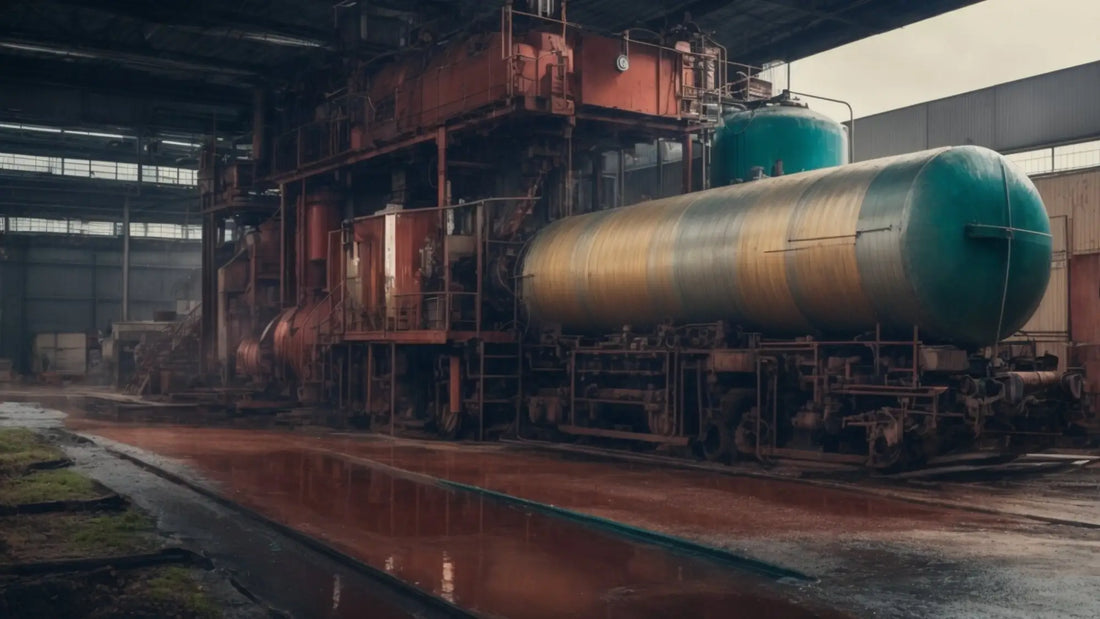
What is pipe lining? How does it work? Advantages and disadvantages
Share
What is pipeline lining?
Pipeline lining is a rehabilitation technique that allows pipelines to be repaired or reinforced without having to replace them completely. This innovative method is increasingly used in the sanitation and plumbing fields. Lining involves inserting a resin sleeve inside the damaged pipeline, thereby creating a new wall that reinforces the existing structure.
How does it work?
The pipeline lining process begins with a thorough inspection of the pipeline using cameras to identify damaged, cracked, or weakened areas. Once the problematic areas are located, a resin sleeve is custom-prepared to fit the size and shape of the pipeline.
The sleeve is then inserted into the pipeline using an air or water inversion system. Once in place, the sleeve is inflated at high pressure to perfectly fit the walls of the pipeline. The resin contained in the sleeve is then cured using heat or ultraviolet rays, allowing the resin to harden quickly and form a new solid and watertight wall.
Advantages of pipeline lining
- Non-destructive repair: One of the main advantages of pipeline lining is that it allows for repairs without having to dig up or destroy surrounding structures. This significantly reduces costs and disruptions related to the work.
- Speed of execution: The lining process is generally faster than traditional pipeline repair methods. This allows for the quick restoration of the pipeline's proper functioning, thus reducing service interruptions.
- Strength and durability: The resin sleeve used during lining reinforces the existing pipeline, making it more resistant to future damage. It also protects the pipeline against corrosion and water infiltration, thereby extending its lifespan.
- Adaptability: Pipeline lining is suitable for a wide range of pipelines, whether they are made of cast iron, PVC, concrete, or composite materials. It can also be used to repair pipelines of different diameters and shapes, thus offering a flexible solution for various situations.
Disadvantages of pipe lining
- Technical limitations: Although pipe lining is a versatile technique, it may have limitations in terms of pipe diameter and configuration. In some cases, it may not be possible to line certain pipes due to their condition or particular configuration.
- Initial cost: Although pipe lining can reduce long-term costs by avoiding complete pipe replacement, the initial cost may be higher than traditional methods. However, it is important to consider the savings made by avoiding demolition, replacement, and restoration of surrounding structures.
- Specialized training required: The pipe lining process requires technical expertise and specialized training to ensure proper installation. It is therefore essential to call on experienced professionals in this field to guarantee the quality and effectiveness of the work.
Non-destructive work and pipe rehabilitation
Pipe lining is an ideal solution for non-destructive pipe rehabilitation work. Unlike traditional methods, which usually require extensive excavations to access the pipe, lining allows for non-destructive pipe repairs.
This approach has many advantages, including cost and disruption reduction. By avoiding demolition, replacement, and restoration of surrounding structures, lining allows for significant savings. Additionally, the work is generally faster, minimizing service interruptions and speeding up pipe rehabilitation.
Furthermore, pipe lining offers a durable and resistant solution. By reinforcing the existing pipe, it extends its lifespan and reduces the risk of new damage. The resin used during lining is resistant to corrosion and wear, ensuring optimal protection of the pipe.
Conclusion
Pipe lining is a modern and effective technique for repairing and reinforcing damaged pipes without having to replace them entirely. Despite some technical limitations and a potentially higher initial cost, lining offers many advantages, such as non-destructive repair, speed of execution, and durability. It is suitable for a wide range of pipes and is an appropriate solution for pipe rehabilitation work.